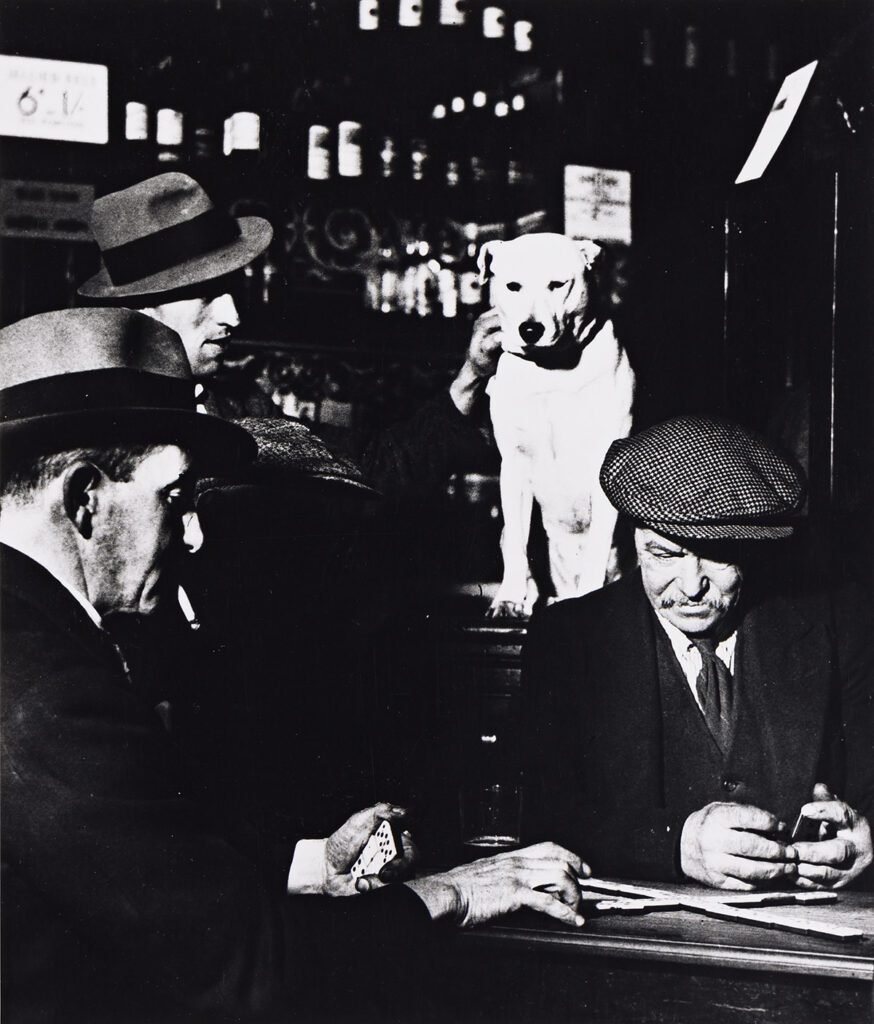Bill Brandt
Bill Brandt is arguably the most admired British photographer of the 20th century. He was also, and remains, one of the most mysterious. He liked it to be thought that he had been born in south London, but he was actually born in Hamburg, the son of an English father and German mother. The Brandts were international merchants and bankers, but Bill Brandt chose a quite different career. His imagination was formed by a cosmopolitan background, including his native Germany (which he came to hate), a crucial period of two and a half years’ treatment for tuberculosis in Switzerland in the mid-1920s, training in a Vienna portrait studio in 1928, followed by three months studying with Man Ray in Paris – in the heyday a Surrealism – in 1929.
It was in England, where Brandt settled in 1931, that his varied apprenticeship came to fruition. His first book, “The English at Home” (1936), made full use of the upstairs/downstairs lives in the country houses and London mansions of his banker uncles. Brandt presented a series of piercingly vivid photographs but also powerful juxtapositions from plate to plate. The newly invented flash bulb had become available in 1931 and Brandt – a warm admirer of Brandt – made good use of it in this and his next book, “A Night in London” (1938). Once more he explored all levels of society. In 1937, Brandt photographed in the north of England, creating stark classics. For the Ministry of Information he photographed the Underground stations, turned into ad hoc bomb shelters during the Blitz of 1940. He was constantly at work during the war, photographing all manner of subjects for leading magazines. This period is summed up in his “Camera in London” (1948), which also contains his longest – if brief – writing on photography.
Among his major subjects during the 1940s were portraiture and landscape. “Literary Britain” (1951) paired landscapes with the words of the writers associated with them. In 1945 Brandt acquired a Kodak police camera with a wide-angle lens and began another project – the prolonged photographic study which was eventually published as “Perspectives of Nudes” (1961). He wanted, he said, to see like a mouse, a fish, or a fly. With this camera, and later a Hasselbad with a Superwide lens, Brandt reinvented the nude. He summed up his career with the book “Shadow of Light” in 1966, followed in 1969 by a retrospective at MoMA, New York. It was shown at the Hayward Gallery, London, and other British art centers and changed the climate of the opinion about photography as an art.
Photography & Works
-

Bill Brandt
“Avebury” England Add to cart -

Bill Brandt
A Snicket in Halifax Add to cart -

Bill Brandt
After the Theater Add to cart -

Bill Brandt
Avebury: After Thomas Hardy (Stone Circle, Wiltshire) Add to cart -

Bill Brandt
Billingsgate Porter Add to cart -

Bill Brandt
Camden Hill Add to cart -

Bill Brandt
Coal Searchers Add to cart -

Bill Brandt
Coal-Searcher Going Home to Jarrow Add to cart -

Bill Brandt
Domino Players in a North London Pub Add to cart -

Bill Brandt
Halifax Add to cart -

Bill Brandt
Losing at the Horse Races, Auteuil, Paris Add to cart -

Bill Brandt
Moira Shearer Add to cart -

Bill Brandt
Nude Add to cart -

Bill Brandt
Nude Add to cart -

Bill Brandt
Nude, Campden Hill, London Add to cart -

Bill Brandt
Nude, London Add to cart -

Bill Brandt
Nude, Micheldever, Hampshire, November Add to cart -

Bill Brandt
Parlourmaid and Underparlourmaid Ready to Serve Dinner Add to cart -

Bill Brandt
Portrait of a Young Girl, Eaton Place, London Add to cart -

Bill Brandt
Stonehenge Add to cart -

Bill Brandt
Top Withens, Yorkshire Add to cart -

Bill Brandt
Train Leaving Newcastle Add to cart -

Bill Brandt
Untitled Add to cart
News & Articles

Iconic Photographs: Pictures that Stand the Test of Time

Rhythms of the City

Planes of Light: Photographs and Spatial Borders

Bill Brandt’s René Magritte

Bill Brandt’s Parlourmaid and Under-Parlourmaid Ready to Serve Dinner

Environmental Diversity: The World Through a Lens

